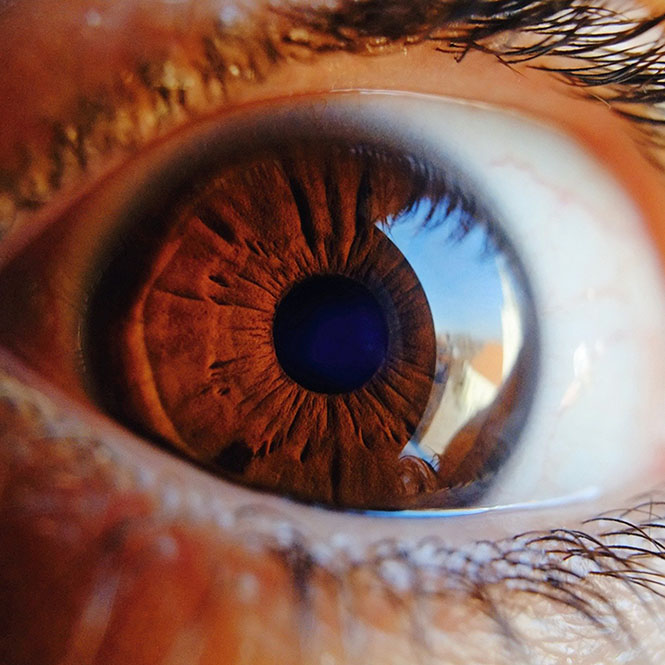A Quick Glaucoma Crash Course… Human eyes are incredible—and incredibly complicated.
The downside is that this means we can experience big problems with our vision health if just one thing goes wrong. One factor that might not seem obvious is the pressure of the fluid in the chambers of the eye. If it rises too much, it can damage the optic nerve and lead to permanent vision loss. That’s how glaucoma works.
Glaucoma is a disease that damages your eye’s optic nerve. It usually happens when fluid builds up and increases eye pressure. The term “glaucoma” refers to a group of disorders that damage the ocular nerve, leading to vision loss and blindness. Glaucoma is most commonly caused by ocular hypertension, or high pressure inside of the eye.
The Fluid System of the Eye
Our eyes are filled with clear fluid. The front chambers contain aqueous humor and the larger rear chamber contains vitreous humor. In a healthy eye, the pressure of these fluids remains within a healthy range because old fluid drains out through the pupil at the same rate as new fluid is produced. Glaucoma can interrupt this essential drainage cycle, causing the pressure to rise to dangerous levels.
The Main Types of Glaucoma
The two main types of glaucoma are open-angle and angle-closure. The first happens very suddenly, when the drainage canals are physically blocked by the iris. Multiple symptoms usually serve as warning signs, such as headaches, nausea, extremely blurry vision, halos around lights, and eye pain. Go straight to the eye doctor if you experience these symptoms.
90% of glaucoma cases (meaning about 2.7 million per year) are open-angle. In this form of glaucoma, the eye’s drainage canals become clogged over time, preventing effective draining. The process is so slow that the patient may not notice it until the later stages, which is one reason regular comprehensive eye exams are so important. The earlier we catch open-angle glaucoma, the earlier we can begin treatment and prevent additional damage.
What Are the Risk Factors of Glaucoma?
Everyone is at some level of risk for developing glaucoma, but certain factors make it more likely. Angle-closure glaucoma is a bigger risk for people of Asian descent, while black and Hispanic people and the elderly are more likely to develop open-angle glaucoma.
Apart from age, heredity is one of the biggest glaucoma risk factors. Studies estimate that more than half of glaucoma cases are familial, meaning that someone with a sibling who has glaucoma is ten times more likely to get it than someone who doesn’t. Other risk factors include steroid use and eye injury.
Diagnosing Glaucoma Early Can Help Preserve Sight
There’s no cure for glaucoma; however, when caught early, we can take steps to slow or halt vision loss. Often treatments as simple as specialized eye drops that reduce the pressure building up inside of your eye can make a difference.
Right now, there is no way to reverse the damage glaucoma does to the optic nerve. That may change in the future, but modern treatments can halt the disease’s progress, particularly in the early stages. You can protect your eyesight by learning about your personal risk factors and keeping up with your regular eye exams!
Our highest priority is our patients’ healthy eyesight!
Top image used under CC0 Public Domain license. Image cropped and modified from original.
The content on this blog is not intended to be a substitute for professional medical advice, diagnosis, or treatment. Always seek the advice of qualified health providers with questions you may have regarding medical conditions.

